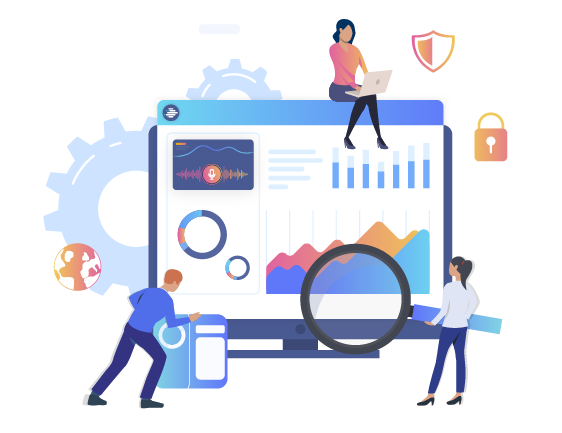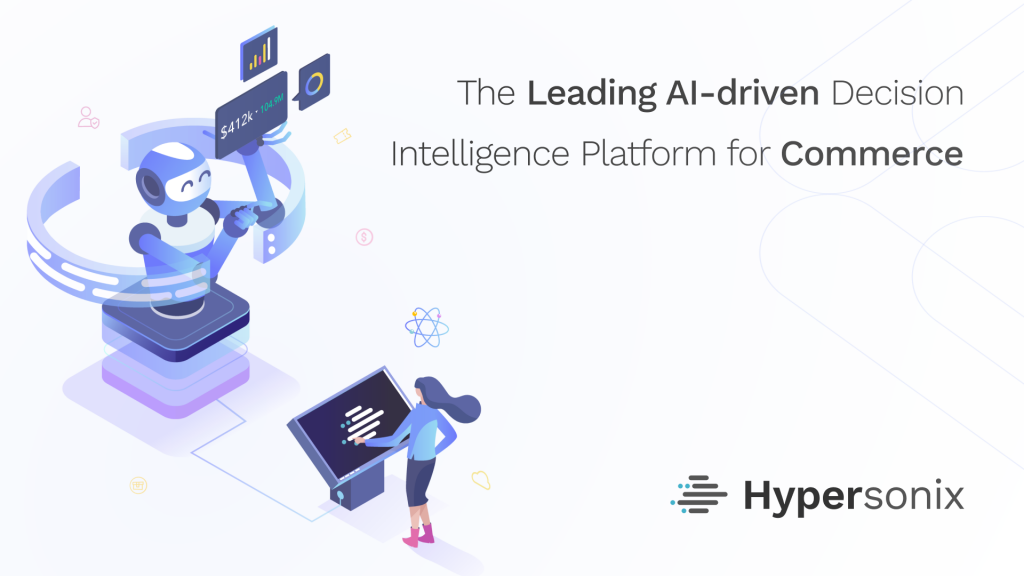7 Habits of Highly Effective Consumer Commerce Enterprises
7 Habits of Highly Effective Consumer Commerce Enterprises
Few self-help books have been more impactful over the years than Stephen Covey’s “The 7 Habits of Highly Effective People” which was first published in 1989. Since then, many other authors have used the “7 Habits” framework for various purposes. This article borrows that 7 Habits framework to define the 7 Habits of Highly Effective Data-Driven Consumer Commerce Enterprises.
Consumer Commerce enterprises like retailers, restaurants and hospitality enterprises have always been characterized as data rich environments. However, historically only the largest organizations in these sectors have been able to use data insights as a competitive weapon. This is now changing, and quickly. Companies of all sizes in these sectors are increasingly depending on insights from data to better serve customers, align products and services, and drive profitable revenue growth.
Now more than ever, retailers, restaurants, and hospitality organizations are being forced to embrace data driven decision making. Instinctual and legacy decision-making approaches that may have once served these organizations well, are no longer adequate in the digital, instant gratification era. And if that was not enough, the impact of COVID-19 has given all enterprises a real wake up call with some not being able to adapt to seismic shifts in consumer demand patterns in a timely enough way.

In today’s unique environment, it makes sense for executives and business leaders to ask three fundamental questions that cut to the heart of the matter:
- Are you satisfied that your business has become a truly data-driven enterprise right now?
- However you answered the question above, is it acceptable to you?
- If ever there was an ideal time to become a data-driven enterprise, when would that be?
Generally, most executives would honestly answer
- No
- No
- Now
With this in mind, below, I will outline the best practices that are embraced by the very best data-driven retailers, restaurants, and hospitality enterprises. In keeping with the theme, it will be framed as the 7 Habits of Highly Effective Consumer Commerce Enterprises.
#1 Tear down data silos within the organization
Whether you have legacy technology or modern technology; on-premise systems or cloud-based systems; and whether you are buying software packages or building your own software platforms, it is clear that companies in consumer commerce are forced to deal with fragmented data sources. These fragmented data sources result in data silos and data silos result in people silos.
Leaders in consumer commerce are actively creating Unified Data Analytics Platforms (“UDAP”) and intelligent data lakes in the cloud. On these platforms, they are stitching together previously disparate internal and external data sources to create 360-degree views on customers, products and services, and their business operations. As a simple illustration, a company in consumer commerce may have different solutions in place for point-of-sale, payments, ecommerce, and customer loyalty. A unified data analytics platform can bring source data together from these systems for an unprecedented holistic perspective on their customers. Better understanding your customers can result in happier customers, greater customer loyalty and wallet-share.
An important best practice in setting up a UDAP is to leverage one that offers Automated Machine Learning (AutoML) to support automatic data identification, integration, mapping, and cleansing. The platform should support adaptive scheduling allowing for real-time (streaming) and batch integrations.
#2 Democratize access to insights by non-technical decision-makers
Democratization of data insights is a fancy way of saying empowering all decision-makers within an organization, including those who are not technical.
In most companies, the technology landscape is quite complex. The traditional approach around business intelligence and analytics has been for companies to invest in data warehousing platforms and extract, transform, load (ETL) middleware tools. These companies would also need to invest in human resources such as data analysts and technology professionals to deal with setting up and managing this complex environment. They would also need to invest in reporting and data visualization tools to support various decisioning needs.

Regrettably, the usual end result of these traditional tools-based and people-intensive approaches was that they end up not serving the needs of non-technical decision makers, because they are hard to use, and typically far slower than the decision making process itself. As a result, companies who have taken this route have been forced to either invest in data and business analysts who could actually provide what the non-technical decision makers needed. Alternatively, they could accept the fact that the users would resort to instinctual, non-data-driven decision making.
Leaders in consumer commerce sectors are focused on enabling and empowering non-technical decision makers to fend for themselves with exceptionally easy-to-use experiences; without the decision-makers being forced to depend on analysts and/or technology professionals. In today’s environment, this means ridiculously intuitive user experiences that are familiar to everyone. Some examples:
- It is not uncommon for most people to conduct numerous Google searches every day in their personal lives. What if the user experience offered in the data-driven decisioning platform could be “Google-like” in nature where questions could be asked in plain English and responses rendered in milliseconds?
- Most people have become very accustomed to verbally getting some help from Amazon’s Alexa or Apple’s Siri. Consumer commerce leaders today want data driven decision making to be conversational, leveraging Natural Language Processing (NLP), Natural Language Understanding (NLU), and Natural Language Generation (NLG). Without getting lost in the jargon, imagine being able to support your non-technical decision-makers with an “Alexa-like” experience.
- Other best practices employed by leaders include using a Microsoft Excel-like presentation of tabular data, “one-click” access to auto-generated insights, and very simple visual data discovery without having to worry about database-connectors and APIs.
#3 Provide access to actionable insights anytime, anywhere
People in the retail, restaurant, and hospitality sectors have always been on the go. Visiting store locations, working remotely, and of course in their offices. COVID-19 has exacerbated the necessity for anywhere and anytime access to insights.

The point is that data-driven organizations realize that the standard today is for real-time insights to be available to all who are in need, twenty-four hours-a-day, seven-days-a-week, and available on different devices such as traditional PCs, tablets and smartphones. The experience on all platforms needs to be consistent and fast.
#4 Incorporate analytics into daily, weekly, monthly rhythms to ensure adoption
It is impossible to be a data-driven organization without all key people within the organization, adopting the decisioning tools into their daily, weekly, and monthly rhythms. The data-driven decisioning platform should become the go-to “system of intelligence” for even things already well-automated. This means that daily, weekly, and monthly reports should be refactored on the decisioning platform. It is better to retire legacy reports and tools to drive the usage and adoption of the company’s central system of intelligence.
#5 Embrace full range of descriptive, diagnostic, predictive and prescriptive analytics
For many years, business intelligence and reporting platforms have enabled retailers, restaurants, and hospitality organizations to understand how they are performing in various areas of their business. This “look in the rear-view mirror” approach is what is called basic descriptive analytics. This can be reports, key performance indicators (KPIs), and data visualizations. More than 90% of analytics platforms in consumer commerce sectors are focused on answering how are we doing?
Leaders in data-driven decision making are no longer satisfied with merely knowing how we are doing. They are looking to understand why they are performing in a certain way through automated root cause analysis, otherwise known as diagnostic analytics. They also demand to know what they can do about it through predictive and prescriptive analytics.
Predictive analytics allow consumer commerce companies to accurately forecast how customers might react to price changes, promotional offers, and assortment changes. Decision-makers might want to model out different scenarios before deciding on the best path to take. Prescriptive analytics takes the next logical step beyond predictive analytics by providing clear and specific guidance to the decision maker on the best path to accomplish the businesses’ objectives. Think of prescriptive analytics as having clear, definitive recommendations to act upon.
Artificial Intelligence (AI) plays an increasingly important role in helping best-in-class, data-driven enterprises through deep learning, machine learning, and advanced data science. This is especially true for diagnostic, predictive and prescriptive analytics. There are increasing numbers of consumer commerce companies of all sizes moving beyond just basic reporting, KPIs, and data visualizations, into these new frontiers.
#6 Integrate advanced analytics into all core business processes and systems with closed-loop actionability
Having already established some key examples of how highly effective data-driven enterprises do things very differently from non-data-driven enterprises, perhaps nothing is more differentiating than this: Data-driven retailers, restaurants and hospitality organizations are especially adept at integrating advanced analytics into all core business processes across their organizations. And they take it even further by incorporating derived insights into their “action systems” that operate their business.
More clearly, there is no benefit to generating more accurate demand forecasts in an advanced analytics platform if those forecasts are not integrated into financial and business planning systems to drive better outcomes. Why generate more optimal pricing and promotions in an advanced analytics system if they are not being published to point-of-sale or ecommerce transactional systems.

The broader point is that most traditional business intelligence systems consumed data from operational systems, but they never really published valuable content back to those same operational systems. Data flowed one way, but not back the other way. As a result, valuable insights were generated, but never made actionable.
Great consumer commerce businesses are in the habit of integrating insights into all core business processes and concurrently making those insights actionable in the operational systems used to run the business. They also tend to be very focused on making sure that business process integration and systems integration happen in real-time wherever possible without latency.
#7 Impatience for instinctual decision-making
The last habit of highly effective, data-driven, consumer commerce enterprises deals with culture and accountability. Leaders in these enterprises expect all internal decision makers from the stores to the warehouses and especially in the headquarters to have their facts together. They are expected to depend on data insights rather than “gut” instinct.
In these enterprises, one rarely hears “I don’t know” in their management meetings, board meetings and cross-departmental discussions. There is an impatience for old school approaches or anecdotes. Data-driven decisioning laggards are quickly weeded out of these organizations for other people committed to a culture of accountability.
What is the conclusion? Data-driven organizations have a higher likelihood of enduring success!
It is tough out there in all sectors of consumer commerce. Customer behaviors are changing very rapidly, and likely many of those changes will be forever. Competitors have gotten tougher and many are finding new ways to survive and thrive at your company’s expense. Your trading partners are not immune to these changes either, requiring fast-acting and decisive cross supply chain collaboration.
In the months and years ahead, we will see some of our favorite brands and banners disappear from the market. COVID-19 certainly deserves its fair share of the blame, but it is important for companies that wish to endure to leverage this challenging time to re-think everything. How can we solve age-old problems in new ways? How can we capitalize on new emerging trends? Certainly, the most highly effective enterprises will truly be data-driven and certainly more so than their competitors.
At Hypersonix, we enable the 7 habits of highly effective data-driven Consumer Commerce Enterprises
Hypersonix, a venture-backed San Jose, California based company that offers an autonomous cloud-based, AI-powered analytics solution is enabling decision-makers to aggregate and analyze disparate data sources and derive actionable insights, simply and quickly, without needing to depend on IT or analysts being involved. Serving Consumer Commerce industries like Retailers, Restaurants, Hospitality, eCommerce, and CPG Brands, Hypersonix helps clients drive profitable revenue growth, save money, and deliver exceptional customer experiences.

Harnessing the power of AI innovations like machine learning and natural language processing, Hypersonix offers its customers an exceptionally simple and fast “Google-like” text and voice search experience for their business augmented by “Jarvix” an embedded virtual decision assistant. The company offers a full suite of descriptive, diagnostic, predictive, and prescriptive analytics designed to help its customers understand what is happening, why is it happening, and what can you do about it?
Want to Learn More? Request a personalized demo of Hypersonix AI-Powered Analytics Platform today.
✎ by Todd P. Michaud, President & Chief Customer Officer at Hypersonix, Inc.


.png)



